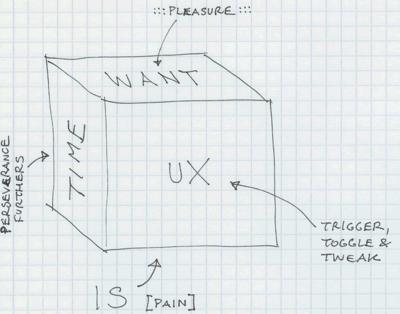From BFI, the Buckminster Fuller Institute:
“The function of what I call design science is to solve problems by introducing into the environment new artifacts, the availability of which will induce their spontaneous employment by humans and thus, coincidentally, cause humans to abandon their previous problem-producing behaviors and devices. For example, when humans have a vital need to cross the roaring rapids of a river, as a design scientist I would design them a bridge, causing them, I am sure, to abandon spontaneously and forever the risking of their lives by trying to swim to the other shore.”
– R. Buckminster Fuller, from Cosmography
It starts with deeply understanding need. Need is intimately connected with risk and opportunity, and how to intelligently deal with it. Eg by designing a bridge across roaring rapids, implementing a blue ocean strategy or anticipate a future opportunity by doing a Gretzky. Relevance is all about timing. Again, taking the bridge as an example building it close to a place where people already are wading over eg between two neighbouring trading villages. Value follows from combining all of the above. Combining it creatively and by design results in innovation. Innovation, whether incremental or disruptive, is nothing other than creating opportunity whilst reducing risk, designing for increased relevance while building upon something existing. Disruption is nothing but the healthy response from the market, letting go of increasingly obsolete artifacts and practices. Design, rather than something artificially added or as words added as frosting on the cake, can be simply described as the ability to better meet the needs of those you want to connect with, in a way that makes better sense for them in their own lives. As we are increasingly interconnected, tasked with building a sustainable global village, the need to design relevant bridges, relevant artifacts, sustainable practices and convivial models has never been as urgently called for.
